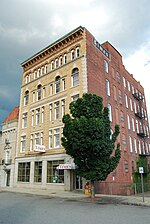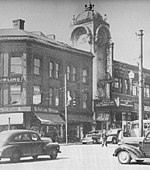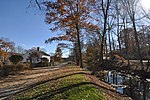Pawtucket Public Library
1852 establishments in Rhode Island1896 establishments in Rhode IslandBuildings and structures in Pawtucket, Rhode IslandEducation in Providence County, Rhode IslandGovernment buildings completed in 1896 ... and 8 more
Government buildings on the National Register of Historic Places in Rhode IslandHistoric district contributing properties in Rhode IslandLibraries on the National Register of Historic Places in Rhode IslandLibrary buildings completed in 1902NRHP infobox with nocatNational Register of Historic Places in Pawtucket, Rhode IslandRalph Adams Cram buildingsUse mdy dates from August 2023

The Pawtucket Public Library, formerly known as the Deborah Cook Sayles Public Library, is located at 13 Summer Street in Pawtucket, Rhode Island. Its main building, designed by Ralph Adams Cram and built in 1899-1902, and was a gift to the city from Pawtucket's first mayor, Frederic Clark Sayles, in memory of his recently deceased wife. In the late 1970s, an addition was built to connect the library to the neighboring Pawtucket Post Office, which had been built in 1896, had served as the post office until 1941, and which now forms part of the library's infrastructure as the renamed Gerald S. Burns Building.
Excerpt from the Wikipedia article Pawtucket Public Library (License: CC BY-SA 3.0, Authors, Images).Pawtucket Public Library
Summer Street, Pawtucket
Geographical coordinates (GPS) Address Nearby Places Show on map
Geographical coordinates (GPS)
| Latitude | Longitude |
|---|---|
| N 41.878888888889 ° | E -71.385277777778 ° |
Address
Summer Street 23
02860 Pawtucket
Rhode Island, United States
Open on Google Maps










